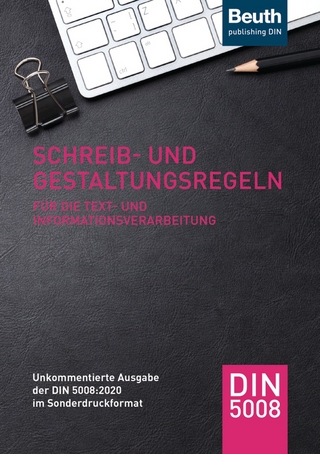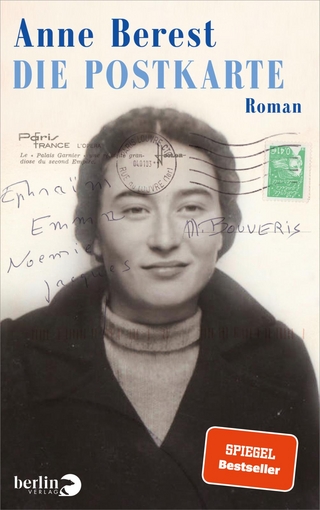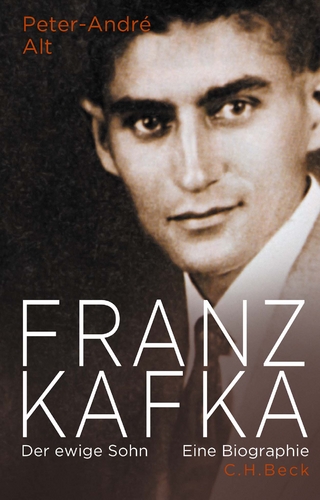
The College Writer: A Guide to Thinking, Writing, and Researching (w/ MLA9E Update)
Wadsworth Publishing Co Inc (Verlag)
978-0-357-50584-7 (ISBN)
Randall VanderMey is a professor in the department of English at Westmont College in Santa Barbara, California. He also has taught composition, literature, and technical writing at Iowa State University, Dordt College, and the University of Iowa. Dr. VanderMey earned his M.A. from the University of Pennsylvania, M.F.A. from the Iowa Writers' Workshop, and Ph.D. from the University of Iowa. He is a contributing editor and creative consultant for Write Source. Dr. VanderMey has received numerous fellowships, grants, and awards for his teaching and poetry. He has published two books of poems, GROWING SOUL: A SONG CYCLE, GOD TALK and CHARM SCHOOL: FIVE WOMEN OF THE ODYSSEY as well as a commissioned biography, MERIZON: THE GREAT JOURNEY. Dr. John Van Rys has taught composition, business writing, creative writing, and literature to college students for more than 30 years. He began his teaching career at Dordt University in Sioux Center, Iowa, before moving to Redeemer University in Hamilton, Ontario, in 2005. He earned his M.A. and B.A. from the University of Western Ontario and his Ph.D. from Dalhousie University. Today, Dr. Van Rys pursues scholarly work in Canadian literature, while also writing fiction and poetry. For more than 20 years, he has worked on writing-across-the-curriculum theory and practice, on connections between workplace and academic writing. He has also pursued strategies for strengthening varied literacies in students, from reading and research to visual literacy. Dr. Van Rys has applied his expertise, co-authoring various writing handbooks for students, from middle school to college. He has also co-authored an award-winning business-writing handbook for workplace professionals, WRITE FOR BUSINESS, with UpWrite Press. Patrick Sebranek (M.A. University of Wisconsin, LaCrosse) taught English, speech, and multimedia classes for 16 years at Union Grove High School in Wisconsin. During that time, he served as the English department chair and worked on several district-wide projects, including a writing-across-the-curriculum program and a K-12 writing sequence. He has studied the works of James Moffett, Ken Macrorie, Linda Reif, Nancie Atwell, and many other contemporary educators dealing with writing and learning. Mr. Sebranek is an author and editorial director for the Write Source Educational Publishing House and works closely with teachers and educators on all new and revised handbooks and sourcebooks. Dr. Verne Meyer is an educator and businessperson. For nine years, he taught English in high schools in Michigan and Wisconsin. In addition, for fifteen years, he taught dramatic literature, theater history, and composition at Dordt University in Iowa. In 1977, partnering with Mr. Sebranek, Dr. Meyer co-founded Write Source Educational Publishing House, now a subsidiary of Houghton Mifflin Harcourt Supplemental. Dr. Meyer earned his B.A. from Calvin College, his M.A. from Marquette University, and his Ph.D. from the University of Minnesota. In addition to this text, he has co-authored a number of texts for college students, including THE COLLEGE WRITER'S HANDBOOK, COMP, THE BUSINESS WRITER, and WRITE FOR WORK. To meet the needs of students in grades 8 through 12, he has co-authored WRITERS INC, SCHOOL TO WORK, WRITE FOR COLLEGE, and a number of Write Source textbooks. Dr. Meyer's publications for businesspeople include WRITE FOR BUSINESS and EFFECTIVE EMAIL MADE EZ. Dr. Meyer is currently a contributing editor for Write Source and UpWrite Press. He is also a featured speaker in the School Improvement Network's instructional videos, Writing Across the Curriculum.
Part I: THE WRITING PROCESS
1. Getting Started.
The Writing Process: From Start to Finish. Aiming for Writing Excellence. Understanding Your Project. Developing a Topic. Researching Your Topic. Getting Started: Applications. Learning-Objectives Checklist.
2. Reading Critically.
Cultivating Critical-Thinking Habits. Using the SQ3R Reading Strategy. Critical Thinking Through Reading. Taking Notes Actively. Responding to a Text. Summarizing a Text. Engaging with Social Media. Critical Reading: Applications. Learning-Objectives Checklist.
3. Viewing Critically.
Viewing an Image Actively. Interpreting an Image. Evaluating an Image. Critiquing a Video. Detecting Misinformation. Viewing Critically: Applications. Learning-Objectives Checklist.
4. Planning Your Piece.
Forming Your Thesis Statement. Developing a Plan or an Outline. Experiment with Mapping Methods. Planning the Design of Your Project. Planning Your Piece: Applications. Learning-Objectives Checklist.
5. Drafting: From Paragraphs to Essays.
Basic Essay Structure: Major Moves. Tips for Drafting. Drafting Paragraphs. Opening Your Draft. Developing the Middle. Ending Your Draft. The Last Step in Drafting: Your Working Title. Drafting: Applications. Learning-Objectives Checklist.
6. Revising Your Draft.
Tips for Revising Your Work. Revising Your Ideas. Revising Your Organization. Revising for Voice. Strengthening Your Body Paragraphs. Revising Collaboratively. Revising Your Draft: Applications. Learning-Objectives Checklist.
7. Polishing Your Prose.
Tips for Polishing Your Prose. Strengthening Sentence Style. Fixing Weak Wording. Polishing Your Prose: Applications. Learning-Objectives Checklist.
8. One Writer's Process.
Ariana's Assignment and Response. Angela's Planning. Ariana�s First Draft. Ariana�s Revision. Ariana�s Edited Draft. Ariana�s Proofread Draft. Ariana�s Finished Essay. One Writer�s Process: Applications. Learning-Objectives Checklist.
Part II: READER: STRATEGIES AND SAMPLES.
9. Forms of College Writing.
Three Curricular Divisions. Writing in the Humanities. Writing in the Social Sciences. Writing in the Natural Sciences. The Rhetorical Modes. Critical Thinking and Writing: Applications. Learning-Objectives Checklist.
10. Personal Writing.
Meeting the Mode. Strategies for Crafting Personal Essays. Personal Essays: Learning Writers� Moves. Speaking Ill of the Dead," by Rachel Ten Hove. "It Took Me 18 Years to Embrace My Name," by Fiza Pirani. "What I Learned in Prison," by James Kilmore. DIY: Craft Your Own Personal Essay. The Personal Essay: Applications. Learning-Objectives Checklist.
11. Analytical Writing: Definition.
Meeting the Mode. Strategies for Crafting Definition Essays. Definition Essays: Learning Writers� Moves. "How �Namaste� Flew Away From Us," by Kumari Devarajan. "The History of �Coming Out," by Abigail Saguy. "Dead Indians," by Thomas King. DIY: Craft Your Own Definition Essay. Definition Essays: Applications. Learning-Objectives Checklist.
12. Analytical Writing: Classification.
Meeting the Mode. "Why We Lift," by Hillary Gammons. Strategies for Classification Essays. Classification Essays: Learning Writer�s Moves. "Latin American Music," by Kathleen Kropp. "Understanding the Four Types of AI: From Reactive Robots to Self-Aware Beings," by Arend Hintze. "Four Ways to Talk About Literature," by John Van Rys. DIY: Craft Your Own Classification Essay. Classification: Applications. Learning-Objectives Checklist.
13. Analytical Writing: Process.
Meeting the Mode. �American Lumpia: Filipino Egg Roll,� by Andrea Santiago. Strategies for Writing Process Essays. Process Essays: Learning Writer�s Moves. "Chasing the Stoke," by Tim Zekveld. "Yogurt: Milk & Mayhem," by Nina Mukerjee Furstenau. "The Emancipation of Abe Lincoln," by Eric Foner. DIY: Craft Your Own Process Essay. Process Writing: Applications. Learning-Objectives Checklist.
14. Analytical Writing: Comparison-Contrast.
Meeting the Mode. �Modern Arranged Marriages,� by Ariana King. Strategies for Writing Compare-Contrast Essays. Compare-Contrast Essays: Learning Writers� Moves. "Beyond the Polite Smile," by Janice Pang. "Why We Care About Whales," by Marina Keegan. "How the Internet Has Changed Bullying," by Maria Konnikova. DIY: Crafting Your Own Compare-Contrast Essay. Compare-Contrast Essays: Applications. Learning-Objectives Checklist.
15. Analytical Writing: Cause and Effect.
Meeting the Mode. �Adrenaline Junkies,� by Sarah Hanley. Strategies for Writing Cause-Effect Essays. Cause-Effect Essays: Learning Writers� Moves. "1$_Your_P@$$wOrd_Cl3v3r?" by Scott Reichelt. �On the 100th Anniversary of the Negro Leagues: A Look Back at What Was Lost,� by Rob Ruck. "The Rise of the New Groupthink," by Susan Cain. DIY: Craft Your Own Cause-Effect Essay. Cause-Effect Essays: Applications. Learning-Objectives Checklist.
16. Reading Literature: A Case Study in Analysis.
Strategies for Analyzing Literature and the Arts. Analyzing Literature: Learning Writers� Moves. Analyzing a Poem. "Let Evening Come," by Jane Kenyon. "'Let Evening Come': An Invitation to the Inevitable," by Sherry Van Egdom. A Poem to Analyze. "Wild Geese," by Mary Oliver. Analyzing a Short Story. "A Clean Well-Lighted Place," by Ernest Hemingway. "'A Clean Well-Lighted Place': Emotional Darkness," by Julia Jansen. Analyzing a Film. "The Revenant -- A Brutal Masterpiece," by James C. Schaap. Literary Terms. Poetry Terms. DIY: Crafting Your Own Literary Analysis. Analyzing Literature: Applications. Learning-Objectives Checklist.
17. Persuasive Writing: Strategies for Argumentation.
Meeting the Mode: "The Commerce of Violence," by Wendell Berry. Structuring Arguments. Engaging the Opposition. Arguing Through Appeals. Making and Qualifying Claims. Supporting Your Claims. Identifying Logical Fallacies. "Executive Deception," by Kathleen Dean Moore. Strategies for Argumentation: Applications. Learning-Objectives Checklist.
18. Persuasive Writing: Positions, Actions, and Solutions.
Meeting the Mode. �Evening the Odds,� by Dave DeHaan. Strategies for Persuasive Writing. Persuasive Essays: Learning Writers� Moves. "Remedying an E-Waste Economy," by Rachel DeBruyn. " Reaction GIFs of Black People Are More Problematic Than You Think," by Naomi Day. " Why �Latinx� Is Succeeding While Other Gender-Neutral Terms Fail to Catch On," by Katy Steinmetz. "Can We Please Stop Using �Latinx�? Thanx," by Kurly Tlapoyawa. "Is Marijuana as Safe as We Think?" by Malcolm Gladwell. DIY: Crafting Your Own Persuasive Essay. Persuasive Essays: Applications. Learning-Objectives Checklist.
BONUS ONLINE CHAPTERS.
A. Taking Essay Tests.
Reviewing for Tests. Forming a Study Group. Consider the Testing Situation. Taking the Essay Test. Writing Under Pressure: The Essay Test Quick Guide. Taking an Objective Test. Tips for Coping with Test Anxiety.
B. Writing for the Workplace.
Writing the Business Letter. Writing Memos and E-mail. Applying for a Job.
C. Preparing Oral Presentations.
Organizing Your Presentation. Writing Your Presentation. "Save Now or Pay Later," by Burnette Sawyer. Developing Computer Presentations. Overcoming Stage Fright Checklist.
D. Writing for the Web.
Web Page Elements and Functions. Developing a Web Site and Web Pages. Writing for Different Internet Environments. Critical Thinking and Writing: Applications. Learning-Outcomes Checklist.
Part III: RESEARCH AND WRITING.
19. Getting Started: Planning Your Research.
Your Project: Writing a Research Proposal. Research: An Overview. Getting Focused. Understanding Primary, Secondary, and Tertiary Sources. Exploring Information Resources and Sites. Planning Keyword Searches. Building a Working Bibliography. Developing a Research Plan. Planning Your Research: Applications. Learning-Objectives Checklist.
20. Doing Research.
Your Project: Creating an Annotated Bibliography. Working with Your Sources. Sample Evaluations. Doing Primary Research. Doing Library Research. Doing Free-Web Research. Doing Research: Applications.
21. Practicing Research Ethics.
Your Project: Writing a Literature Review. Research Ethics: A Primer. Developing Credibility through Sources Use. Recognizing Plagiarism. Understanding Why Plagiarism Is Serious. Avoiding Plagiarism. Avoiding Other Source Abuses. Practicing Research Ethics: Applications. Learning-Objectives Checklist.
22. Drafting Research Papers.
Papers with Documented Research: Quick Guide. Reviewing Your Findings. Considering Methods of Organization. Considering Drafting Strategies. Using Source Material in Your Writing. Sample Research Paper: A Humanities Essay. "'Chipping Away' at Our Privacy?" by Lucas Koomans. Sample Research Paper: Science IMRAD Report. "The Effects of the Eastern Red Cedar on Seedlings and Implications for Allelopathy," by Dana Kleckner, Brittany Korver, Nicolette Storm, and Adam Verhoef. Drafting a Research Paper: Applications. Learning-Objectives Checklist.
23. MLA Style.
MLA Documentation: Quick Guide. MLA Format Guidelines. Guidelines for In-Text Citations. Sample In-Text Citations. Quick Guide: MLA Works Cited. Sample Works-Cited Entries. Sample MLA Paper. "The Consequences of Childhood Staples: Do Barbies and Disney Princesses Do More Harm Than Good to Girls' Self-Esteem?" by Annie Sears. Critical Thinking and Writing: Applications. Learning-Objectives Checklist.
24. APA Style.
APA Documentation Guidelines. APA Format Guidelines. Guidelines for In-Text Citations. Quick Guide: APA References. Sample Reference Entries. Sample APA Paper. "The Silent Sibling: How Current Autism Intervention Affects Typically Developed Siblings," by Julia Sweigert. Critical Thinking and Writing: Applications. Learning-Objectives Checklist.
Part IV: HANDBOOK.
25. Understanding Grammar.
Noun. Pronoun. Verb. Adjective. Adverb. Preposition. Conjunction. Interjection. A Closer Look at the Parts of Speech.
26. Constructing Sentences.
Using Subjects and Predicates. Using Phrases. Using Clauses. Using Sentence Variety.
27. Avoiding Sentence Errors.
Subject-Verb Agreement. Pronoun-Antecedent Agreement. Shifts in Sentence Construction. Fragments, Comma Splices, and Run-Ons. Misplaced and Dangling Modifiers. Ambiguous Wording. Nonstandard Language. Quick Guide: Avoiding Sentence Problems.
28. Marking Punctuation.
Period. Ellipsis. Question Mark. Comma. Semicolon. Colon. Hyphen. Dash. Quotation Marks. Italics. Parentheses. Diagonal. Brackets. Exclamation Point. Apostrophe.
29. Checking Mechanics.
Capitalization. Plurals. Numbers. Abbreviations. Acronyms and Initialisms. Basic Spelling Rules. Commonly Misspelled Words.
30. Using the Right Word.
31. Multilingual and ESL Guidelines.
Five Parts of Speech. Understanding Sentence Basics. Sentence Problems. Numbers, Word Parts, and Idioms. Targeting Trouble Spots."
| Erscheinungsdatum | 15.01.2021 |
|---|---|
| Verlagsort | Belmont, CA |
| Sprache | englisch |
| Maße | 188 x 231 mm |
| Gewicht | 1089 g |
| Themenwelt | Schulbuch / Wörterbuch ► Wörterbuch / Fremdsprachen |
| Sonstiges ► Geschenkbücher | |
| Geisteswissenschaften ► Sprach- / Literaturwissenschaft ► Literaturwissenschaft | |
| Geisteswissenschaften ► Sprach- / Literaturwissenschaft ► Sprachwissenschaft | |
| Sozialwissenschaften ► Pädagogik | |
| ISBN-10 | 0-357-50584-0 / 0357505840 |
| ISBN-13 | 978-0-357-50584-7 / 9780357505847 |
| Zustand | Neuware |
| Haben Sie eine Frage zum Produkt? |
aus dem Bereich


